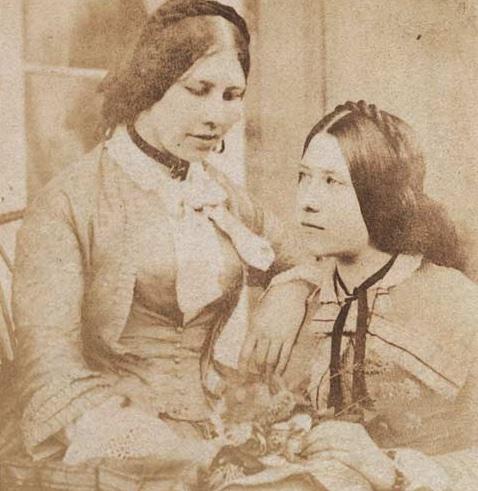
Women in 1800s Swansea and Gower
What role did women play in the economy, family and community in the second half of the nineteenth century in Swansea and Gower?
Women, marriage and money
Under common law, on marriage, a woman’s assets went to her husband. However, widows who remained unmarried could hold assets in their own right, and many in Swansea bought shares in ships. The Married Women’s Property Act allowed women who married after 1870 to own and control their own wages, and inherited assets.
Family size and mortality
In the 1880s about one in seven infants died before their first birthday, and one in five died by the age of five. Most families had six to eight children, so most mothers would have experienced losing at least one child under five, often to infectious diseases such as scarlet fever.
Women’s education
From 1880 elementary school attendance was compulsory, but girls might leave school early to help run the household or contribute earnings. From 1899 girls and boys could win scholarships for free secondary education but take-up was low.
Women’s occupations
In rural Gower, most women worked in agriculture, either as a labourer, or, in land-owning families, supporting the male farmers. The main Gower farming families actively encouraged intermarriage, to prevent land being split up. Coastal areas such as Penclawdd were famous for their cockle-farmers.
In Swansea, working-class girls could go into domestic service, work as a seamstress or a laundress, or run a family-owned shop or market trading business. Some women worked for copper smelters, fetching and carrying rather than heavy work. More educated girls could become teachers. Only the more affluent middle class women could afford to stay at home and run the household.
Women as decision-makers
Lawyers, accountants, shipping agents and clerks were all men, and would not take instructions from married women in the absence of their husband, although wealthy widows were a different matter.
Women at sea
Most sailors were superstitious about women at sea and considered them unlucky. However, the Master of a ship had the right to bring his wife on a voyage, and emigrant ships took women as passengers. Some Master’s wives caused tension with the crew, but others became competent navigators. One famous example is Sarah Jane Rees of Cardiganshire who qualified as a navigator after accompanying her father to sea, and thereafter prepared local seamen for their Board of Trade exams.
Women and the community
If a worker was injured and could not work, or a sailor drowned at sea, there was little in the way of compensation for bereaved families. Through neighbours, church or chapel, women would raise funds to support widows and orphans. Smelters would permit copper widows to remain in their homes in purpose built worker housing but would not provide an income.
So women like my great-great grandmother had to use informal networks to learn what was going on in the worlds of farming, trade and shipping, and influence her husband to make decisions. At sea, a Master had the right to invite his wife on a voyage, and according to family lore, my great-great-grandmother did often sail with him, leaving their children with a housekeeper.
Further reading
Pwll-du remembered
Joanna Greenlaw: Swansea Copper Barques and Cape Horners